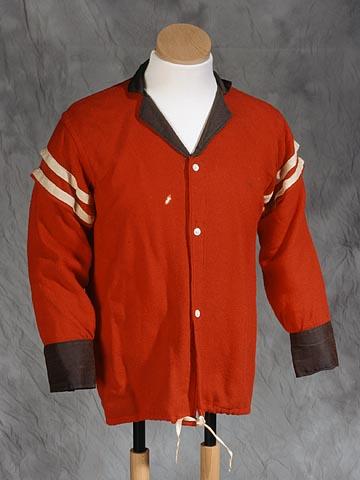See also: The 1898 Wilmington Coup; Bellamy, John Dillard; Waddell, Alfred Moore; Moore, Roger
The Red Shirts were a white supremacist terrorist group and intimidation wing of the Democratic Party in North Carolina during the late nineteenth century. They were active in the state elections of 1898 and 1900 and their violence impacted the outcome of these elections. The Red Shirts received their name from loose red tunics worn as uniforms. The costumes was derived from the South Carolina Red Shirts, another white supremacy group that sought to end Republican Reconstruction in that state in the 1870s.
The Red Shirts appear to have attracted men from various economic classes; well-known ministers, for example, led their processions. Prominent Red Shirts included future congressman Claude Kitchin and future governor Cameron Morrison.

In 1898, the political strategy of the North Carolina Democratic Party, which had lost power to Populist and Republican Fusionists in 1894, was to regain control of the General Assembly by emphasizing the danger of African American office holding and voting. Early in the campaign, Democratic leaders recognized that success would depend on more than logical persuasion. As a result, they used Red Shirts to threaten and intimidate black and white Populists and Republicans.
The Red Shirts and their violence played a substantial role in the 1898 election, which produced the first Democratic General Assembly since 1893. Red Shirts were organized as groups of mounted men, often masked, who carried pistols, rifles, and shotguns. Centered in the eastern part of the state, they made threats of death and physical or economic harm to political opponents. Red Shirts broke up political meetings and prevented Fusionist candidates from speaking. They also engaged in direct forms of violence including beatings and whippings of Black and African American people, assaults on candidates, and murder. While roaming in rural areas, they shot into the residences of their political opponents. On election day 1898, Red Shirts prevented non-Democrats from getting to polls. One gang mobbed the train of Republican governor Daniel L. Russell Jr. at Hamlet, while others paraded in front of the governor's mansion.
In 1899, Democratic legislators planned to guarantee the party's continued rule by formally disfranchising its opponents. The device for this grip on state government was a constitutional amendment limiting the right to vote, for which an election was to be held in August 1900.
Once again Red Shirts were called upon for violence and intimidation. In Smithfield, they attacked a Populist speaker's platform. Red Shirts beat and threatened Populists, dragged black people from their homes and assaulted them, and threatened opposition voters with death if they appeared at polls. In 1900 they collected large stores of arms, harassed opposition orators, and stole Fusionist mail. Populist U.S. senator Marion Butler was assaulted by Red Shirts when he tried to leave a train in eastern North Carolina. In contrast, Red Shirts escorted their Democratic heroes, including future governor Charles B. Aycock. Advertising the muscle of white supremacy, they appeared frequently at Aycock's rallies in the eastern part of the state. Rather than an accidental by-product of white supremacy fervor, Red Shirt violence was planned by Democratic officials. It is likely, for instance, that campaign funds raised by the state party were used to hire Red Shirts and to buy alcohol for them.
The bloody campaigns of intimidation were successful. Voting results indicate fraud and massive declines in black turnout. Democrats, including Josephus Daniels, Furnifold M. Simmons, and Aycock, justified the admittedly criminal acts of 1898 and 1900 as necessary given the "evil" of black political participation. Red Shirts' activities demonstrated the expediency of the politics of white supremacy, the limited appeal of universal democracy among North Carolina's early twentieth-century leaders, and the persistence of violence as a political tactic.